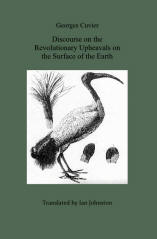The Siberian Unicorn

|
For 200 years, it was thought Elasmotherium sibericum, The Siberian Unicorn, went extinct 350,000 years ago. Now we know they were walking the earth at the same time we were...read article here... |
____________________________
Cassini

|
The space probe Cassini went on a 20-year voyage to study Saturn's secrets and as a result, our knowledge has grown, well, astronomically, one might say. Here is some of what we learned..read article here... |
____________________________
Google vs. Googol

|
Whether you spell it Google or Googol, we are talking about massive numbers. And, what exactly is a Googol?..read article here... |
____________________________
The World's Oldest Royal Library

|
The Library of Alexandria is one of the largest and most important libraries in Earth's history, however, it is not the oldest by more than 5 centuries. The Royal Library of Ashurbanipal which holds more than 30,000 cuneiform tablets..read article here...
|
At Richer Resources, we are dedicated to the creation of high quality books, art and other media intended to enrich the lives of individuals of all ages.
As an independent publisher, we are bound by a sense of integrity and quality to produce products which enhance the lives and vision of individuals everywhere.
Sign up to receive notice of free eBooks, new releases and special subscriber-only offers.
(You can unsubscribe at any time)
Sign up to receive our newsletter and receive a coupon for 10% off your next purchase.
The Library of Alexandria is one of the largest and most important libraries in Earth's history, however, it is not the oldest by more than 5 centuries. There are at least 3 older libraries, one of them The Royal Library of Ashurbanipal which holds more than 30,000 cuneiform tablets.

The Royal Library of Ashurbanipal
The Royal Library of Ashurbanipal, named after Ashurbanipal, the last great king of the Assyrian Empire, is a collection of thousands of clay tablets and fragments containing texts of all kinds from the 7th century BC. Among its holdings was the famous Epic of Gilgamesh. The remains of this great repository was discovered in modern-day northern Iraq, near the city of Mosul, the area of ancient Nineveh, capital of Assyria in northern Mesopotamia. The site was in ruins, yet 30,000 clay tablets and fragments survived.
Ashurbanipal was ruler of the Assyrian Empire from around 668 BC to 627 BCE. During this time, the empire underwent its greatest expansion and eventually included Babylon, Persia, Syria and Egypt. Ashurbanipal was known to be especially cruel to his enemies, however. is said to have treated his own subjects fairly and justly. He was literate and passionate about collecting written knowledge from anywhere in the world. Most of the collection consists of legal and administrative texts, as well as science, philosophy, by literary and sacred texts.
Most likely destroyed by fire, only portions of clay tablets survived, whereas any texts on leather, papyrus and wax tablets would have been destroyed, so it is impossible to know how large this library may have been. The remaining fragments are giving researchers an enormous amount of information on the civilization, history and beliefs of that time, as well as earlier times since the collection was designed to include any knowledge that could be found and preserved at the time. The most famous of these is one of the best copies of the Epic of Gilgamesh, which is considered the oldest surviving work of literature in existence. International efforts are being undertaken to to restore and re-open this library as soon as possible.
Interested in Geology and Paleontology? Read Georges Cuvier's Discourse on the Revolutionary Upheavals of the Earth for a new look at evolution and the history of the Earth.
